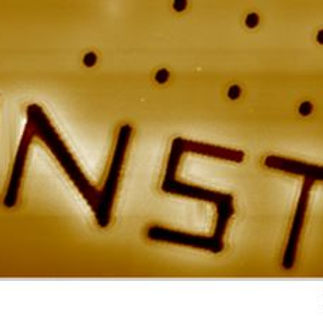2D-nanoLAB
Research Overview
Optical and electronic property study of 2D semiconducting nanomaterials
Nanofabrication of opto-electronic devices such as Photodetectors, SERS substrate, Bolometric sensors
FET based bio and chemical sensing
Applications of nanocomposites and nanomaterials in coating technology, nanofilteration and energy devices.

A little about recent Research activity
Our research activity is mostly focused on exploring optical and electronic response of nanostructured 2-D layered materials. We are also working on developing 2-D layered materials based nano - sensors and transducers. Apart from these, we have an interest in application of nano-composites of 2-D layered materials such as flexible electronics, coatng technology and in energy devices Two-dimensional (2-D) layered materials such as graphene, phosphorene and transition metal dichalcogenides (TMDs) like MoS2, WS2 are capable materials for next-generation Nano electronic devices. Various 2-D layered materials exhibit metallic, insulating or semiconducting properties depending upon layer thickness and demonstrates unique optical and electronic response. Due to these properties, it opens an unprecedented prospect of miniaturizing electronic and optoelectronic devices, chemical & biosensors platform. Our group is focused on exploring the fundamental optical and electronic properties and novel functionality of these 2-D layered materials. Creating nanostructures on 2-D layered materials is one of the major challenge to realize its application in nanoelectronics and opto-electronics. However, the existing conventional fabrication technique has their own drawback such as isotropic etching rate,usage of of chemicals and complicated equipment set ups. Our group is interested in fabricating nanostructures on these 2Dnano-materials using the simple, reliable and economical method. We have developed a novel technique to fabricate the nanostructures on these materials by using simple one step focused laser irradiation technique which is simple one step process and free from chemical contamination. Our research interest lies in exploring the optical and electronic response of various nanostructures, fabricated on 2D layered nanomaterials. We are also working on nanocomposites of 2-D layered materials for applications in flexible electronics, energy devices, sensing and coating technology. Our complementary approach provides the capability to gain deep insight into the fundamental mechanism of light to matter interactions.
 |  |  |
|---|---|---|
 |  |  |
 |  |
Research Highlights

Nanostructured 2D semiconductors
Nanostructures of 2D may open different prospect of applications in nano-electronic and opto-electronic devices and sensors. However, the fabrication of these complicated nanostructures can be executed by using standard nano-patterning techniques such as lithography, printing, etc. Nevertheless, these standard techniques involve affluent multistep processes to optimize scalability, form factors and accuracy in the feature size. We have demonstrate the fabrication of unique nano-structures on 2D layered materials, such as nano-ribbons and nano-mesh, by a simple one-step process of direct laser writing using 532 nm low power focused laser.

Opto-electronics of 2D materials
Further we have started exploring various applications of the nanostructures fabricated on 2D materials. For an instant, we have observed unperturbed capacitive behaviour of the MoS2 nanostructures, which offers modulation of capacitance in periodic array on 2D MoS2 flake for potential application in capacitive devices. We reported a detailed investigation of Surface Enhanced Raman Spectroscopy (SERS) based sensing capability of MoS2 nanostructures by using RhB as an analyte molecule to confirm the hot spot created by patterning nanostructures on MoS2 flake by focused laser writing. paving a path for new species of SERS substrate.

Sensors and Actuators
Most of our research activities are finally aimed to develop sensors and actuators based on nanostructured 2D materials. We are trying to explore possibilities of developing wide range of sensing i.e biosensing, soil health sensing, IR sensing, heat sensing etc.
Publications
-
Reversible Pressure-Induced Partial Phase Transition in Few-Layer Black Phosphorus: Anirban Kundu,Damien Tristant,Natalya Sheremetyeva,Anthony Yoshimura,Abraao Torres Dias, Kiran Shankar Hazra*,Vincent Meunier*,Pascal Puech*, Nano Letters, 2020.
-
Sculpting Artificial Edges in Monolayer MoS2 for Controlled Formation of Surface-Enhanced Raman Hotspots: Renu Rani, Anthony Yoshimura, Shreeja Das, Mihir Ranjan Sahoo, Anirban Kundu, Kisor K. Sahu, Vincent Meunier, Saroj K. Nayak, Nikhil Koratkar* and Kiran Shankar Hazra*, ACS Nano, 2020,14: 6258–6268.
-
Impact of transverse and vertical gate electric field on vibrational and electronic properties of MoS2: Renu Rani, Nityasagar Jena, Anirban Kundu, Abir De Sarkar* and Kiran Shankar Hazra*, Journal of Applied Physics, 2020,127: 145101.
-
Ultralong cycle life and outstanding capacitive performance of 10.8 V metal-free micro-supercapacitor with highly conducting and robust laser-irradiated graphene for integrated storage device, Navpreet Kamboj, Taniya Purkait, Manisha Das, Subhajit Sarkar, Kiran Shankar Hazra, Ramendra Sundar Dey*, Energy & Environmental Science, 2019, 12: 2507-2517..
-
Ultrafast Carrier Dynamics of the Exciton and Trion in MoS2 Monolayers Followed by Dissociation Dynamics in Au@MoS2 2D Heterointerfaces, Tanmay Goswami, Renu Rani, Kiran Shankar Hazra, Hirendra N Ghosh*, The Journal of Physical Chemistry Letters, 2019, 10, 3057-3063.
-
Vertically Aligned Few-Layered Graphene-Based Non-Cryogenic Bolometer, Anil K Yadav, Saba Mehsar Khan, Anirban Kundu, Renu Rani, Navneet Soin, James McLaughlin, Devi Shanker Misra, Kiran Shankar Hazra*, C Journal of Carbon Research, 2019, 5 (2), 23.
-
Spectral dependent white light reflection mapping of MoS2 flake for improving accuracy of conventional optical thickness profiling, R Rani, A Kundu, K S Hazra*, Optical Materials 2019, 90, 46-50
-
Modulating capacitive response of MoS2 flake by controlled nanostructuring through focused laser irradiation, Renu Rani, Anirban Kundu, Mohammad Balal, Goutam Sheet and Kiran Shankar Hazra*, Nanotechnology 2018, 29, 345302
-
Graphene Oxide Demonstrates Experimental Confirmation of Abraham Pressure on Solid Surface, A. Kundu, R. Rani and K. S. Hazra*, Scientific Reports 2017, 7, 42538; doi: 10.1038/srep42538.
-
Controlled formation of Nanostructures on MoS2 Layers by Focused Laser Irradiation, R. Rani, D. Sharma, N. Jena, A. Kundu, A. D. Sarkar* and K. S. Hazra*, Applied Physics Letter 110, 083101 2017
-
Vertically aligned graphene based non-cryogenic bolometer, Kiran Shankar Hazra, N. Sion, Anil Yadav, James McLauhglin, Devi ShankerMisra, G Travish 2013, arXiv:1301.1302
-
Facile one-step transfer process of graphene, Bajpai R, Roy S, Jain L, Kulshrestha N, Hazra KS, Misra DS. Nanotechnology. 22, 225606, 2011
-
Enhanced and Stable Field Emission from in Situ Nitrogen-Doped Few-Layered GrapheneNanoflakes, Navneet Soin, Susanta Sinha Roy, Soumyendu Roy, Kiran Shankar Hazra, Devi S. Misra, Teck H. Lim, Crispin J. Hetherington, and James A. McLaughlin, J. Phy. Chem. C, 115, 5366–5372 , 2011
-
Growth of Carbon Nanotube Arrays using Nanosphere Lithography and Their Application in Field Emission Devices, A Mathur, S. S. Roy, K. S. Hazra, D. S. Misra, and J. A. McLaughlin, Diamond Rel. Mat. 19, 914-917, 2010.
-
Appearance of Radial breathing modes in Raman spectra of multi-walled carbon nanotubes upon laser illumination, Padmnabh Rai, Dipti R. Mohapatra, K. S. Hazra,D. S. Misra, Jay Ghatak, and P.V. Satyam, Chem. Phys. Lett. 455, 83, 2008.
-
Nanotip formation on a carbon nanotube pillar array for field emission application, Padmnabh Rai, Dipti R. Mohapatra, K. S. Hazra, D. S. Misra, and S. P. Tiwari, Appl. Phys. Lett. 93, 131921, 2008.
-
Correlation between the saturation of emission current and defect co-ordination number for irradiated aligned multiwalled carbon nanotubes, B. Chakraborty, P. Rai, K. S. Hazra, D. R. Mohapatra, D.S. Misra and S. Banerjee, Chem. Phy.Lett. 495, 266-269, 2010.
-
Effect of top metal contact on electrical transport through individual multiwalled carbon nanotubes, NehaKulshrestha, AbhishekMisra, SenthilSrinivasan, Kiran Shankar Hazra, ReetiBajpai, Soumyendu Roy, GayatriVaidya, and D. S. Misra, Applied physics letter, 97, 222102, 2010
-
Healing of Broken Multiwalled Carbon Nanotubes Using Very Low Energy Electrons in SEM; A Route Towards Complete Recovery,NehaKulshrestha, AbhishekMisra, Kiran Shankar Hazra, Soumyendu Roy, ReetiBajpai, Dipti Ranjan Mohapatra, and D. S. Misra, ACS Nano, 5, 1724–1730, 2011
-
Oxygen plasma assisted end-opening and field emission enhancement in vertically aligned multiwall carbon nanotubes, A Mathur, SS Roy, KS Hazra, S Wadhwa, SC Ray, SK Mitra, DS Misra, JA McLaughlin, Materials Chemistry and Physics, 134, 425-429, 2012
-
Substrate Effects on the Growth of Multiwalled Carbon Nanotubes by Thermal Chemical Vapor Deposition, AshishMathur, SusantaSinha Roy, ShikhaWadhwa, Sekhar Chandra Ray, Kiran Hazra, Devi Shankar Misra, Sushanta Kumar Mitra, James Mclaughlin, Thomas Thundat, Advanced Science Letters, 7, 21-26, 2012
-
Enhancement of Field Emission Characteristics of Carbon Nanotubes on Oxidation, AshishMathur, SusantaSinha Roy, Sekhar Chandra Ray, Kiran Shankar Hazra, Jeremy Hamilton, Calum Dickinson, James McLaughlin, Devi Shankar Misra, Journal of Nanoscience and Nanotechnology, 2011, 11,7011-7014.
-
Enhanced Field Emission and Improved Supercapacitor Obtained from Plasma-Modified Bucky Paper Soumyendu Roy , Reeti Bajpai , Navneet Soin , Preeti Bajpai , Kiran S. Hazra , Neha Kulshrestha , Susanta Sinha Roy , James A. McLaughlin , and D. S. Misra, Small, 7, 688–693, 2011
-
A comparative study of the growth, microstructural and electrical properties of multiwall CNTs grown by thermal and microwave plasma enhanced CVD methods, A Mathur, S Wadhwa, M Tweedie, KS Hazra, C Dickinson, SS Roy, DS Misra, JA McLaughlin, Physica E 44, 29–36, 2011.
-
Enhancement of Field Emission Characteristics in Aligned Multiwalled Carbon Nanotubes due to 70 MeV Ni6+ Ion Irradiation, Chakraborty, Brahmananda; Satpati, B.; Modak, P.; Hazra, K. S.; Rai, P.; Roy, S.; Avasthi, D. K.; Misra, D. S.; Banerjee, S.International Journal of Nanoscience, 10, 1057, 2011
-
Controlled Growth of Semiconducting Single-Wall Carbon Nanotube, Soumyendu Roy, ReetiBajpai, KS Hazra, PadmnabhRai, N Kulsrestha, DS Misra, International Journal of Nanoscience, 1, 35-38, 2011.
-
Dramatic Enhancement of the Emission Current Density from Carbon Nanotube Based Nanosize Tips with Extremely Low Onset Fields, Kiran Shankar Hazra, Padmnabh Rai, Dipti Ranjan Mohapatra, Neha Kulshrestha, Reeti Bajpai, Soumyendu Roy and D. S. Misra, ACS Nano, 3, 2617, 2009.
-
The role of tunneling barrier modification for the saturation current of carbon nanotube field emission in strong electric field,Kiran Shankar Hazra, Vishal Jain and D.S. Misra,Chemical physics letter, 502, 194-197, 2011
-
Improved Field emission from multiwall carbon nanotubes with nano-size defects produced by ultra-low energy ion bombardment,Kiran Shankar Hazra, N Koratkar and D S Misra,Carbon, 49, 4760-4766 ,2011 Description: http://www.sciencedirect.com/scidirimg/clear.gif
-
Tailoring the electrostatic screening effect during field emission from hollow multiwalled carbon nanotube pillars, Kiran Shankar Hazra,Tanuj Gigras and D. S Misra, Appl. Phys. Lett. 98, 123116 , 2011
-
Thinning of multilayer graphene to monolayer graphene in a plasma environment, K S Hazra, J Rafiee, M A Rafiee, A Mathur, S S Roy, J McLauhglin, N Koratkar and D SMisra, Nanotechnology , 22 , 025704, 2011. (this paper has been featured in Nature India)

Crew

Dr. Kiran Hazra
(Principle Investigator)
Ph.D, IIT Bombay
Postdoc-University of California, Los Angeles
Scientist D
Crew

Dr. Kiran Hazra
(Principle Investigator)
Ph.D, IIT Bombay
Postdoc-University of California, Los Angeles
Scientist D
.jpg)



